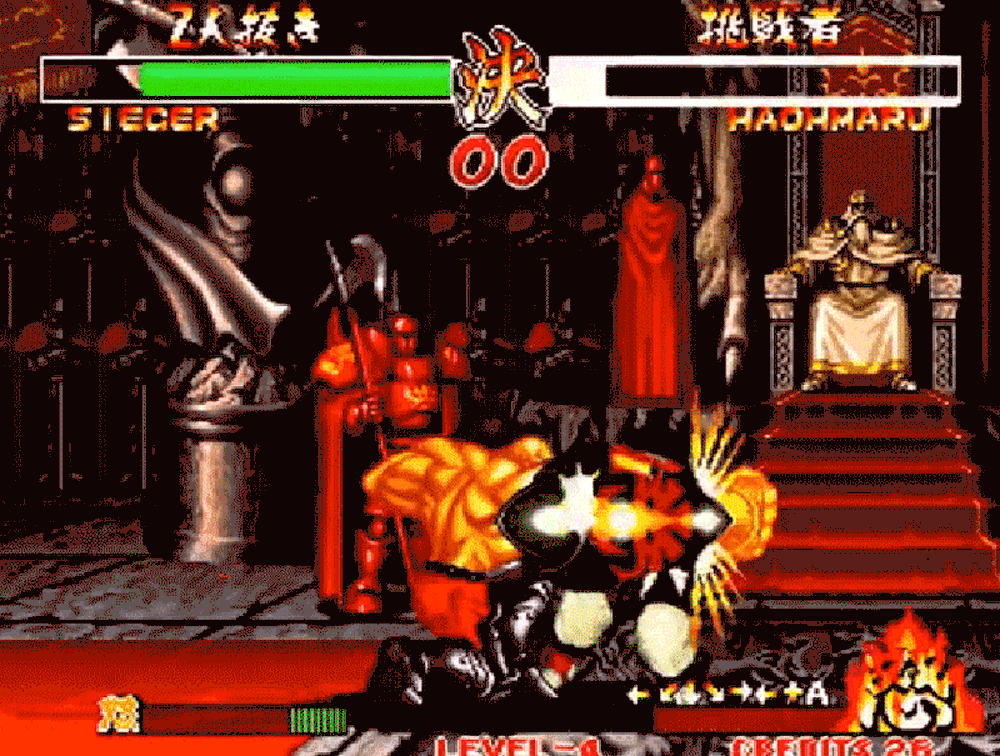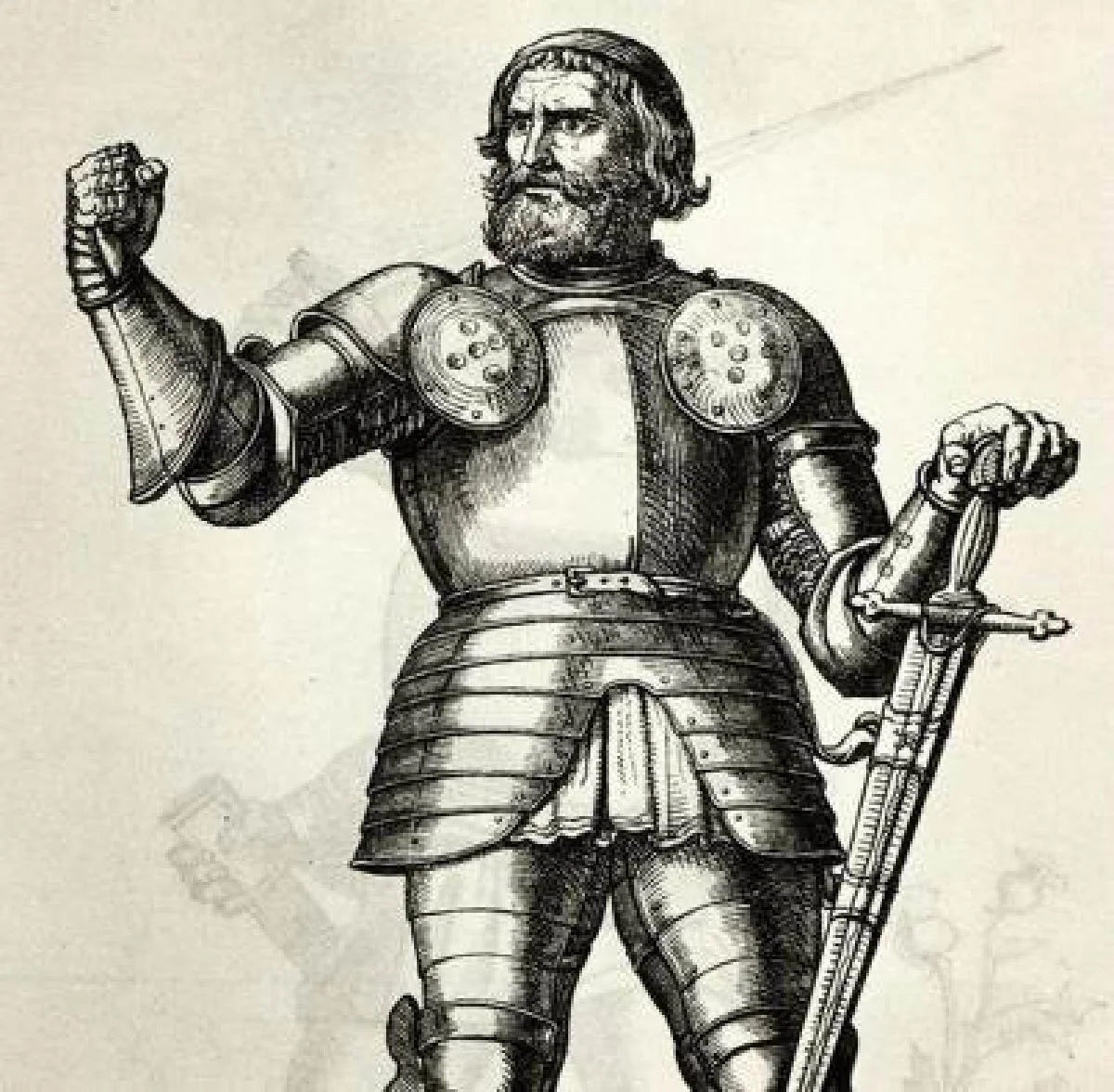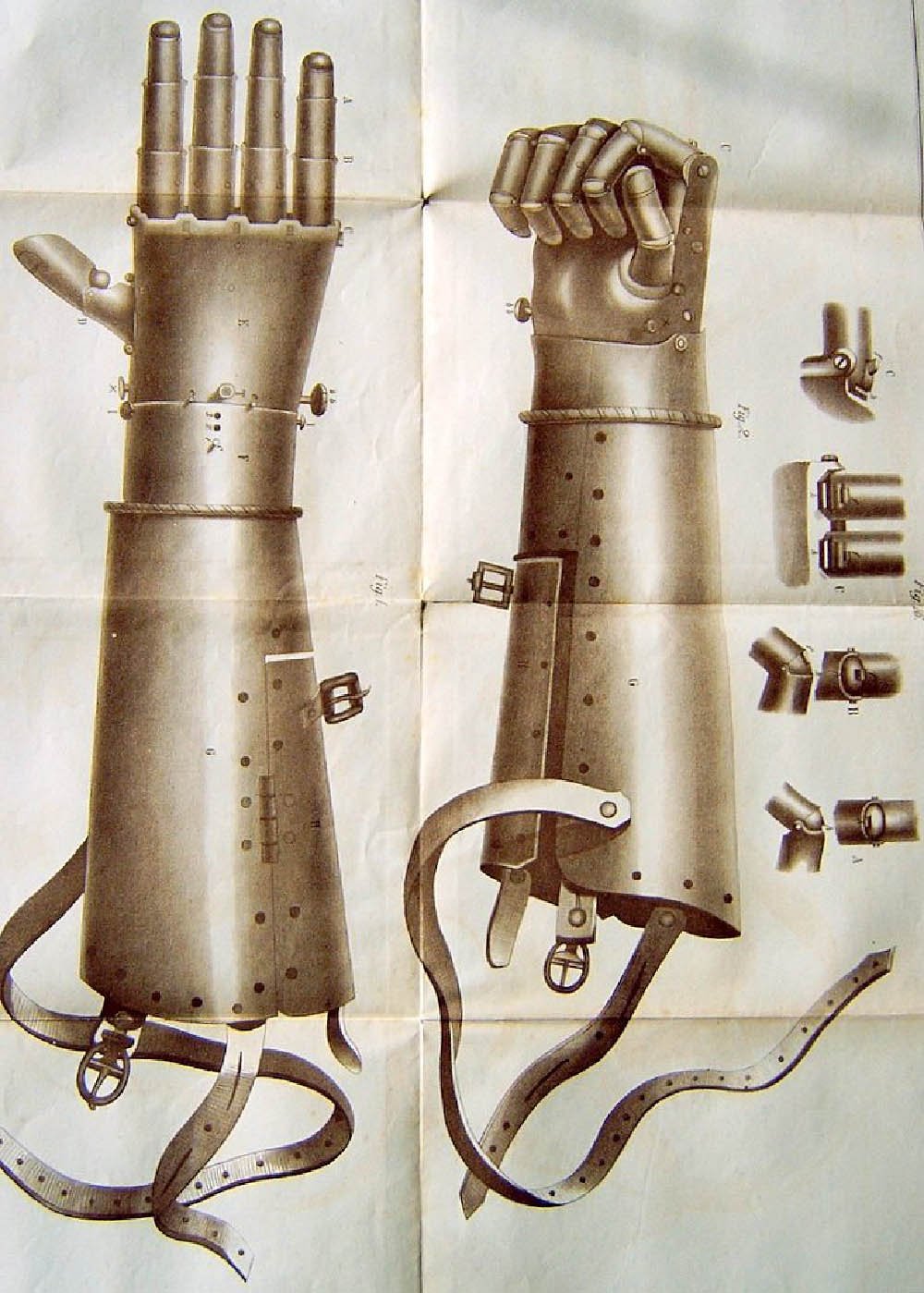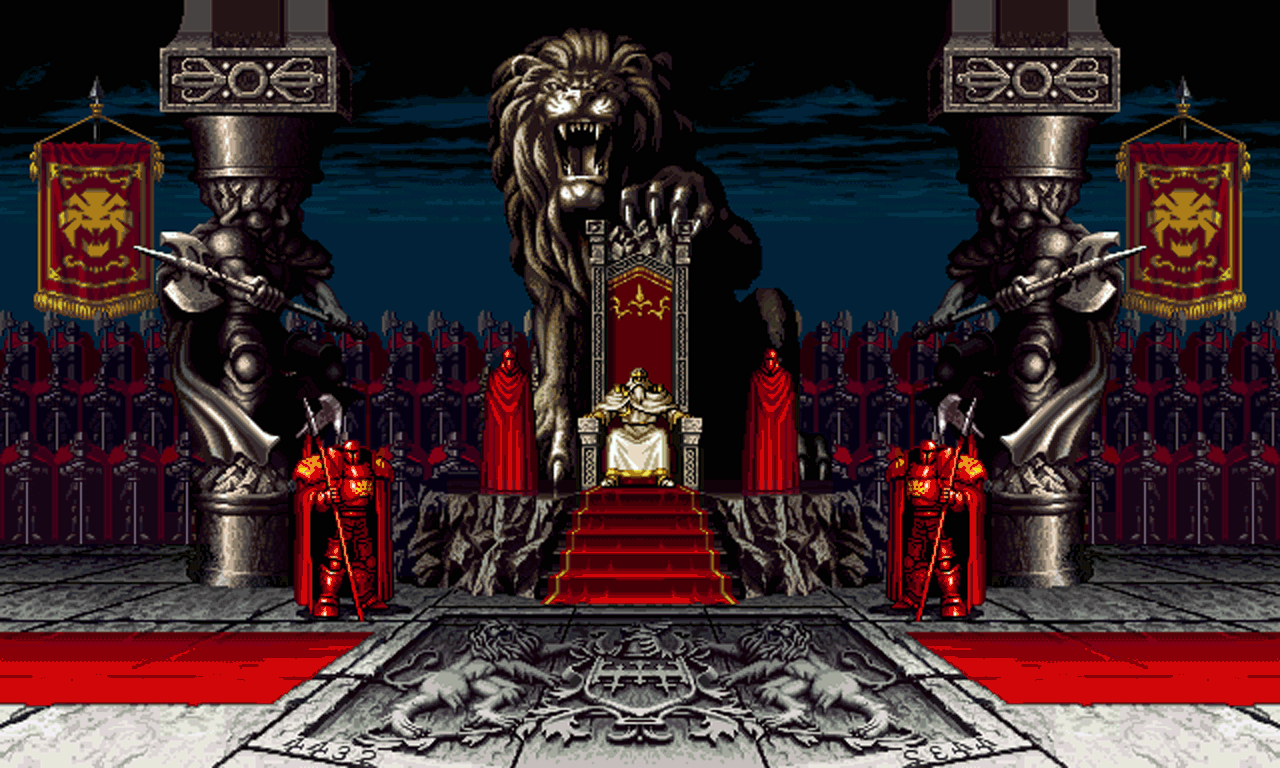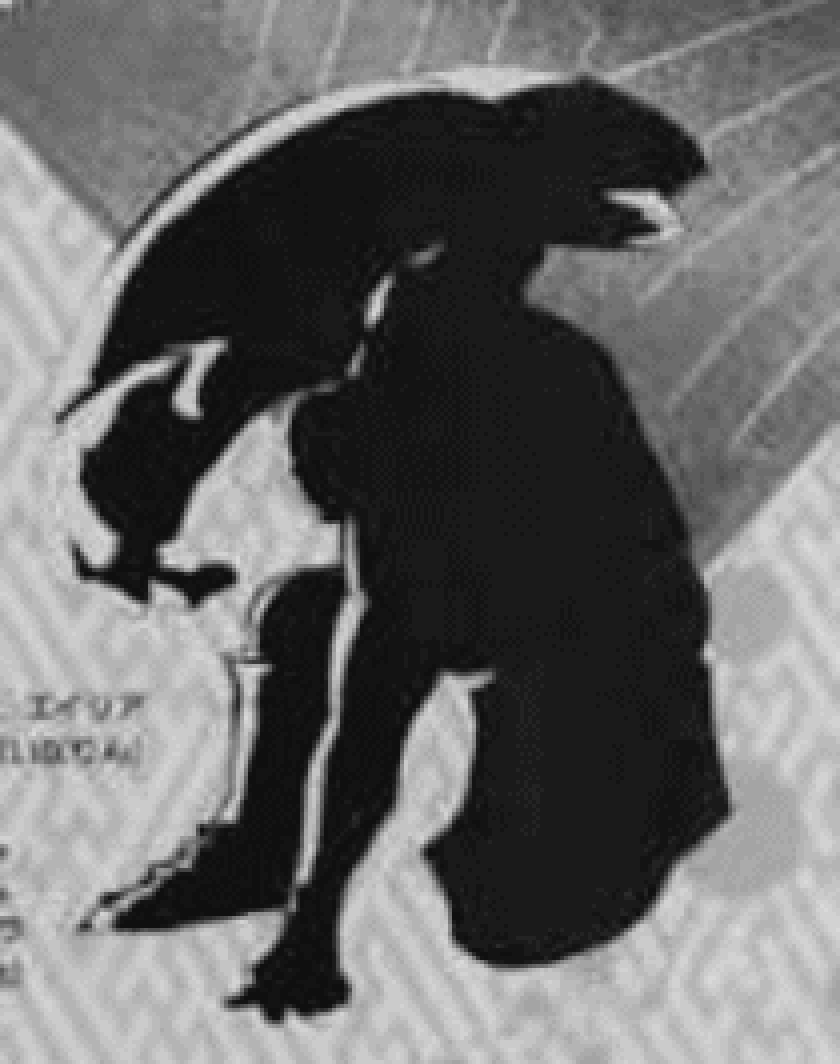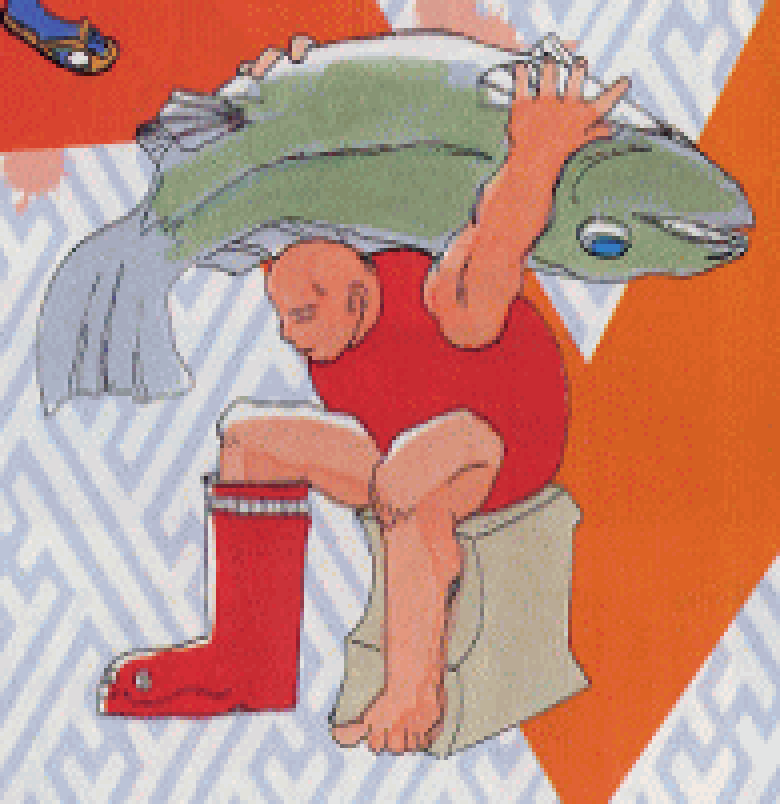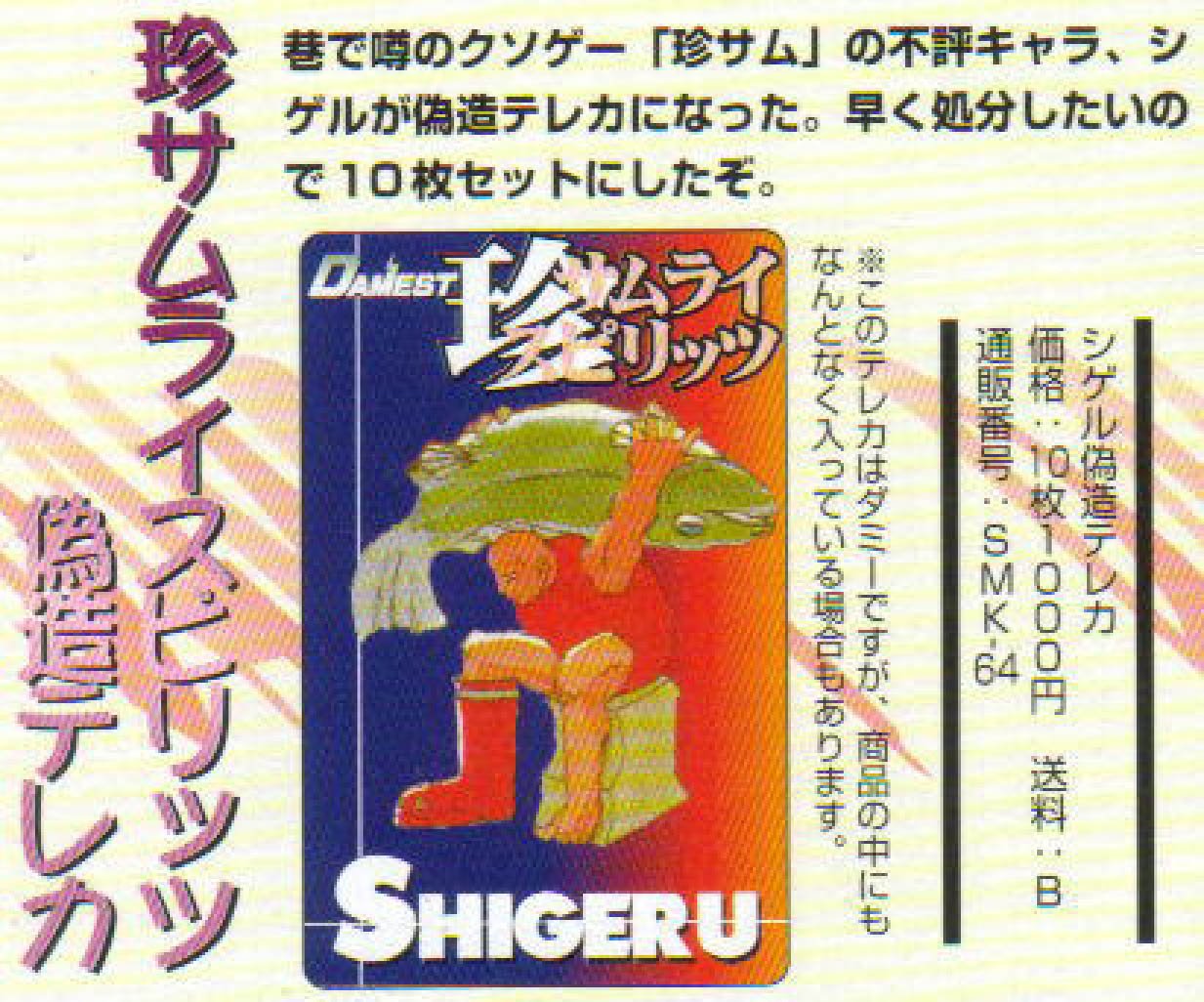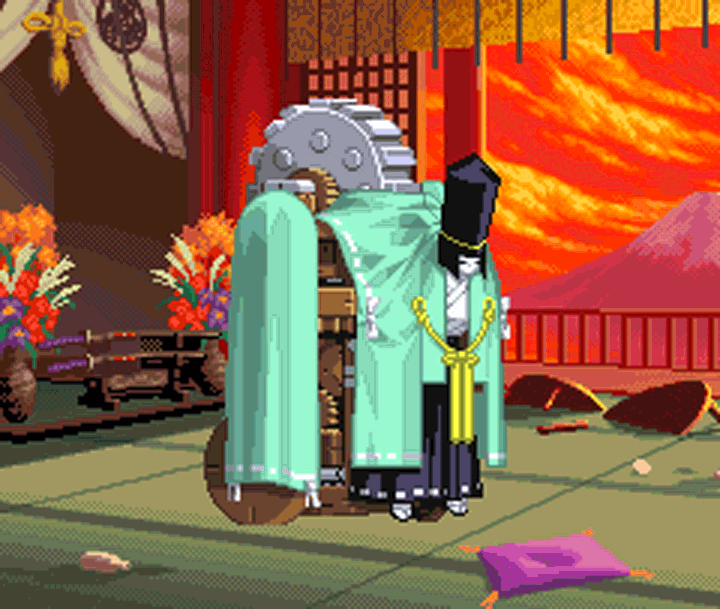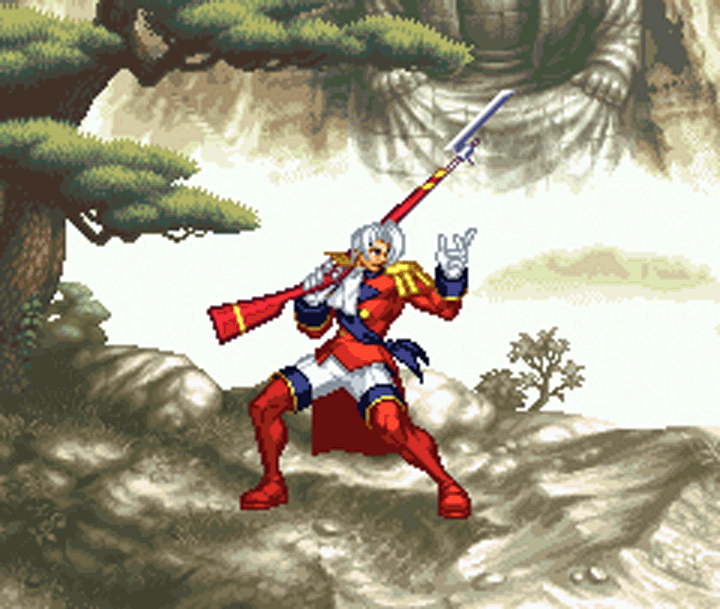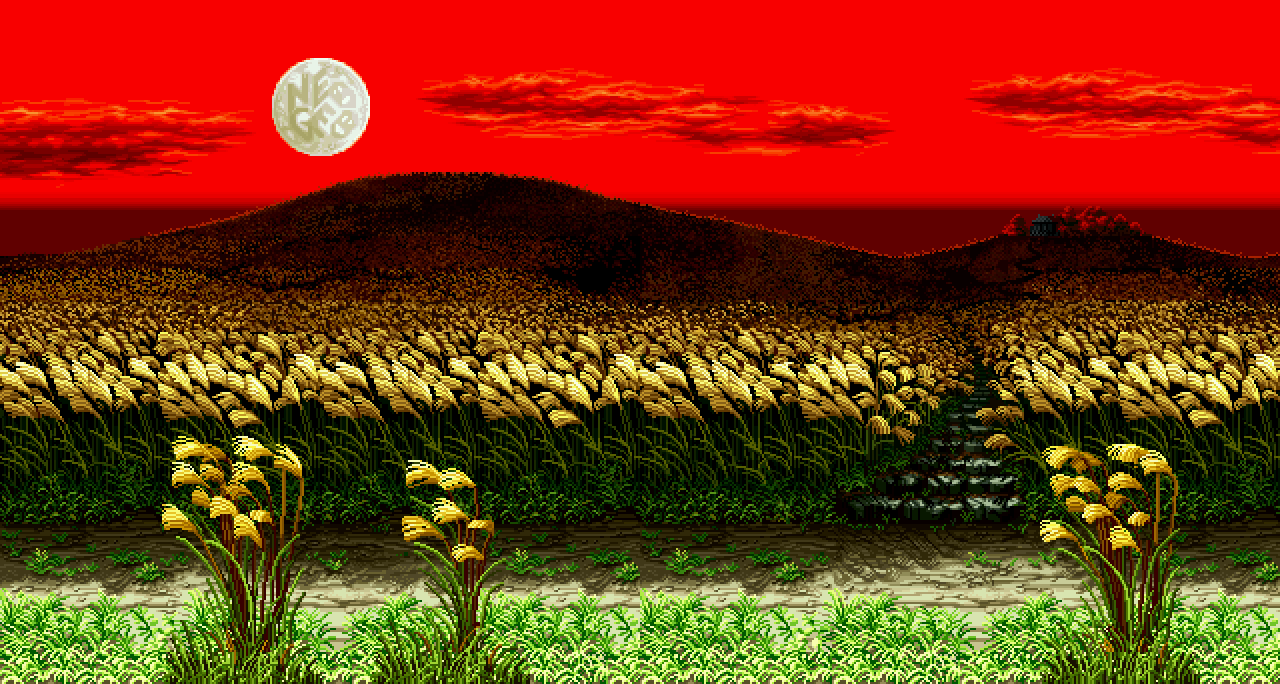Is Samurai Shodown II Referencing a Real-Life 16th-Century Cyborg?
Released in 1993, the first Samurai Shodown found enough success that a second game hit arcades in 1994, bringing with it four new playable characters: Genjuro Kibagami, a mercenary swordsman and new rival for protagonist Haohmaru; Nicotine Caffeine, a diminutive Japanese priest; Cham Cham, a beast girl and the younger sister to the previous game’s Tam Tam, and finally a character seemingly most at odds with the game’s setting: Neinhelt Sieger, a Prussian knight who fights with an oversized mechanized gauntlet called the Krayfish Klaw.
In addition to amplifying his punch attack, the gauntlet can reflect projectiles and unleash a small artillery explosion.
In one of the more metal visuals I’ve seen in a period piece video game, Sieger’s artillery explosion briefly takes the form of a topless woman. I think I’ve seen this painted on a van.
Of these four new characters, only Genjuro would appear again in Samurai Shodown III, joined by four new characters who all hailed from Japan. Aside from Galford, Samurai Shodown III saw the elimination of all the non-Japanese characters, including fan-favorite Charlotte. I’ve always viewed this as a sort of course correction, with SNK trying to hew closer to the samurai setting, even if Charlotte returned in the fourth game and even Cham Cham ultimately ended up coming back for the final round of DLC in the 2019 reboot. Of the four SSII newbies, the one to have least presence in the series overall is Neinhalt Sieger, having only returned for Samurai Shodown VI, a non-canonical game in which every character in the series is playable, even Galford’s dog.
I suppose it makes sense that Sieger wouldn’t make the cut, so to speak. Cool though his design might seem, he feels like he comes from a different series than everyone else, on every level, but perhaps most of all because his gauntlet weapon works differently than the series’ trademark blade-in-hand combat. Here’s the thing, though: I don’t think SNK was really pulling Sieger out of nowhere, and I’m pretty sure he is actually based on a real-life historical figure — one who was arguably a kinda-sorta proto-cyborg who lived in the sixteenth century.
Gottfried “Götz” von Berlichingen, also known as Götz of the Iron Hand, was born around 1480 in Germany. He lived to fight, and served in various military campaigns spanning nearly fifty years. In 1504, he lost his right hand during a siege, although I have to admit he lost it in the most badass way possible: a cannonball struck his sword with such strength that the blade cleaved it clean off. Such an injury would end most people's military careers right then and there, but ol’ Götz was made of sterner stuff — figuratively but very quickly literally, as he commissioned the creation of metal prosthetics. The first was simpler, but the second was the device that gave Götz his nickname: a whole gauntlet that covered his arm. According to a short article in a 2011 issue of Wired, where I first learned about this, the prosthetic had articulated fingers controlled by gears that, when locked into place, could allow Götz to wield a weapon but also grip a quill pen. He fought for another four decades, dying in 1562.
The actual prosthetic hand did not produce artillery explosions — or at least that is not a thing represented in this diagram.
The legacy of the man with the metal arm continued, however, with Goethe’s 1773 play Götz von Berlichingen, which famously had the title character refusing to surrender during a battle, saying the captain of the opposing army can “mich im Arsch lecken.” It literally translates as “lick me in the ass” but contextually means something more along the lines of “kiss my ass” in English — a jeer rather than, like, a specific invitation. It became something of a catchphrase. Euphemistically called the Swabian salute or the Götz quote, it inspired Mozart to compose “Leck mich im Arsch” around 1782. The lyrics just repeat the phrase “Leck mich im Arsch g'schwindi,” or “lick me in the ass, quickly.”
None of this, sadly, is present in Samurai Shodown’s Neinhalt Sieger; if Götz was the inspiration, SNK clearly opted for his iron-fisting aspects and not so much the ass-licking. But how certain am I that this Samurai Shodown character is based on him?
Well, it is very odd that the second installment of a series focused on Edo era Japan has Sieger in it. He and Charlotte are the only representatives of European nations in the main series, so it’s less like Street Fighter, where Capcom seems to be offering an expansive, diverse cast of characters, so much as a fighting game that’s riffing on trends that make sense in a samurai context. Given that the first Samurai Shodown takes place in 1788 and the French Revolution began in 1789, it seems reasonable that the creators would include a character that represents this historical event — and then base her largely on Rose of Versailles, because it was a pop culture phenomenon. The decision to include this German guy in Samurai Shodown II doesn’t seem to tie directly to any historical event, but if you look into what was going on in pop culture at the time…
There is Guts, the protagonist from the manga and anime Berserk. Guts. Götz. It’s right there, right?
The manga debuted in 1989, and although Guts fights with a sword, he boasts a prosthetic arm (like Götz!) that also features a built-in cannon (like Sieger!), which he uses in fights. Just based on the similarity of their names alone, you might assume that Guts has to have been inspired by Götz, but apparently that is not the case: In this interview, Berserk creator Kentaro Miura says it’s all a coincidence.
“I’ve heard about this knight who helped a peasant revolution in Germany, and the knight’s name was [Götz], and he had an iron artificial arm. When I found out about it, I thought it was a strange coincidence. I don’t know if he shot arrows from it. It was especially uncanny because I had already started Berserk. I wasn’t really thinking of anybody at the time I created Guts.”
You can decide for yourself if you think he was being truthful in saying that, but it’s worth considering that in the very next breath, he owned up to Guts’ physical appearance being inspired by Rutger Hauer’s character in the 1985 movie Flesh and Blood. He’s clearly willing to credit his inspirations.
Let’s say Miura was being truthful. If we’re going to believe that it’s a coincidence that he created his iron-handed hero completely independently from this similar one from history, should we imagine that the idea for Samurai Shodown’s iron-handed German dude could have arisen separately as well? I suppose that’s possible, but I think it’s more likely that the team that made Samurai Shodown II would have been familiar with Berserk, maybe even liked it to the point that they wanted to shoehorn Guts into the game. If they did this, they’d probably do it under the guise of a real-life figure from history, in the same way that they used Charlotte Corday to sneak in Oscar from Rose of Versailles in the first game.
The connection is all about the little touches. Guts got his name because it “sounded somehow like a German name,” per this 1996 interview with Miura, but he’s not German because Berserk takes place in a fictional world. Sieger is Prussian, and while Prussia is not “old Germany,” strictly speaking, I do feel like that’s how SNK is using it in Samurai Shodown II — like it’s the Teutonic stand-in for Edo era Japan. Neinhalt Seiger’s name, for what it’s worth, translates from German as “no-stop winner,” which makes for bad English and I think bad German too, but it outdoes Guts for indeed sounding very “like a German name,” at least if you don’t speak German.
Sieger’s stage: Prussia — or Prosia, as it’s sometimes referred to in-game.
While Guts fights with a sword, the decision to have Seiger not, even in a game where almost everyone else does, seems like an effort to distance him from Guts and put him closer to Götz of the Iron Hand. That artificial arm is the most famous thing about him, after all, and it makes for the most striking visual element of Seiger’s design. It also allows SNK to hold off any objections about lifting ideas; even in an industry where inspirations are given and taken freely, I would imagine it’s preferable to be able to show that no, you didn’t just take the original and reuse it but instead reinterpreted in an interesting way.
Finally, there’s one small detail that I got from Sieger’s bio that I think supports a connection to Götz. And BTW, I truly love that just about every fighting game character ever is introduced with a comprehensive profile that included everything from height and weight to zodiac sign and favorite food. Included in Sieger’s is that he dislikes frogs, his special skill is tap-dancing, and his wife’s is named Elizabeth, which I would assume is not a coincidence and in fact a nod to Götz’s wife also being named Elizabeth.
The character does appear in Seiger’s ending but she’s not named in-game, though Galford does attend their wedding, for some reason, and for the occasion Poppy wears a bowtie.
If Miura truly didn’t know about Götz and created his character all on its own, it is interesting how Samurai Shodown II could arguably close the loop, connecting Guts and the real-life Götz. I do realize that having a German name, an iron hand and a wife named Elizabeth don’t add up to the greatest set of evidence, but I think the best indicator that I’m right about this one is that SNK did it before with Charlotte in Samurai Shodown. But if Götz, Guts and Sieger were each created separately? Well, that would be a huge coincidence, but at the very least I’m happy to be linking them here.
Miscellaneous Notes
A sort of joke character named Shigeru exists, based off Sieger. Explained on this page, the Japanese video game magazine Gamest debuted the four new Samurai Shodown II characters in silhouette form… which looks like this.
Because no one was expecting a character with a giant gauntlet, the guess for what kind of character was suggested by this outline was a fat, bald guy hoisting a large fish into the air.
Which I suppose is as reasonable as anything. Shigeru ended up becoming a sort of in-joke among Samurai Shodown, even getting a mock-up for a phone card.
He did not get a real phone card, mind you, but given that Sieger ranks among the least popular Samurai Shodown characters, it amuses me that he is given a run for his money by Shigeru, the knockoff of him who is just some dude holding a giant fish. Come ti think of it, I’m a little surprised this guy wasn’t also in Samurai Shodown VI.
While Nicotine Caffeine didn’t get another playable appearance aside from Samurai Shodown VI — again, where everyone comes back, even the animal buddies — he did remain in the series as a supporting character, and one of the Samurai Shodown III newbies is his nephew, Gaira Caffeine. Since I will probably not ever give Nicotine Caffeine his own post here, I’ll mention now that he gets his name from the fact that Yasushi Adachi, producer of the first three titles in this series, was using both caffeine and nicotine as a creative crutch, per Polygon’s “The Making of Samurai Shodown” article. (You should read nothing into the fact that Nicotine is the chief priest of a temple called Koka-in.) What’s interesting about this portion of the interview is that he tacitly admits that yes, Caffeine was inspired at least partly by Dakuan, the feisty old man appearing in the film Ninja Scroll, saying, “It was a fun time when anime, manga and the video game industry were all going through a stage of growth and were influencing each other.” They sure were.
While I said that Sieger’s gauntlet represents a different type of technology than what we normally see in the series, Samurai Shodown VI offers you the chance to play as Ocha-Maro, a sort of mechanized puppet theater on wheels.
But Ocha-Maru probably is not the weirdest pick for Samurai Shodown VI: That honor would have to go to Andrew, who is modeled on Mister Twenty Dollar Bill himself, Andrew Jackson, the seventh president of the United States. It’s really weird. He’s actually one of the two main protagonists of the game, alongside the crane maid Iroha. Even though Samurai Shodown VI is non-canonical, Iroha would go one to become one of the more popular characters in the series Andrew did not. (His background stage is the White House. It’s really weird.)
Finally, Mozart’s “Leck mich im Arsch” is easily confused with another composition that we previously thought was also by Mozart but now think was most likely done by Wenzel Trnka, though perhaps inspired by Mozart. It elevates the original composition, considerably, going by the title “Leck mir den Arsch fein recht schön sauber,” which translates to “Lick my ass pretty nice and clean.” I can’t think of a better way to end this post than by translating the lyrics in full.
In German:
Leck mire den Arsch recht schon,
fein sauber lecke ihn,
fein sauber lecke, leck mire den Arsch
Das ist ein fettigs Begehren,
nur gut mit Butter geschmiert,
den das Lecken der Braten mein tagliches Thun.
Drei lecken mehr als Zweie,
nur her, machet die Prob'
und leckt, leckt, leckt.
Jeder leckt sein Arsch fur sich.
And in English:
Lick my arse nicely,
lick it nice and clean,
nice and clean, lick my arse.
That's a greasy desire,
nicely buttered,
like the licking of roast meat, my daily activity.
Three will lick more than two,
come on, just try it,
and lick, lick, lick.
Everybody lick their arse for themselves.



